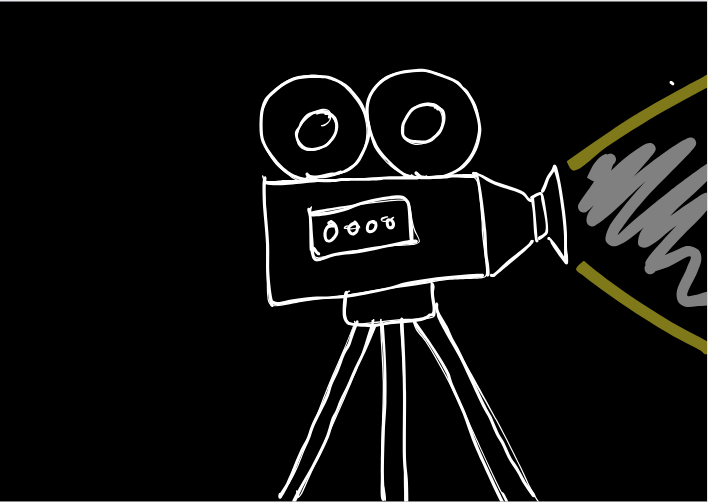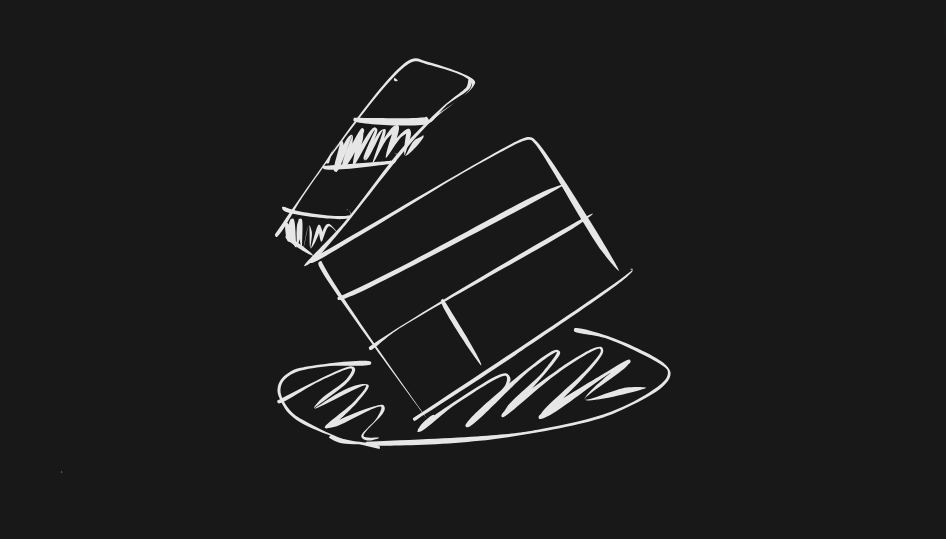How I Made My First Short Film: Tips For Making Your First Short Film

Making your first short film can be doubtful and hard. When I decided to produced my first short film, I did everything. I was the director, writer, actor and editor. It was tiring and I encountered many obstacles to climb through. This is how I started my first short film. With the help of Tomorrow's Filmmakers course.
Filming is separated into 5 production stages that is Development, Pre-production, production, post production and distribution.
Development: Development is the phrase that is organizing the film, writing the script, setting up the budget and in some productions, creating a story board. For some film productions, they create a story board to help with the filming process.
Step 1: The budget
- The first thing I did was to think of a story which I am able to film with the budget which I had and the equipment that I am able to get my hands on. I filmed with an I-phone 11 and bought a tripod, lens and lighting. These are the main equipment you would need to make a film. The equipment which I use were prices which I can afford, but I advice if you are able to get a good quality one, get it. I then decided what applications I am going to use which I ended up with the Filmic pro. using my headphones as my microphone.
- If you are running on a low budget and don't have the money to hire a crew, film by yourself or ask a member of your family or a friend to help out. This is for me, the best thing that could happen. You are able to work on different departments and you are able to discover your interests in filmmaking more.
The budget for this film includes my I-phone 11, tripod, lighting, lens, food etc. it comes to £ . You don't need big cameras to make your first short film.
Work with what you've got.
If you ask any professional they would say the best camera is the one that you have and I do agree with this statement because I used an I-phone to film my short film, and I was able to get the results which I am happy with.
Links to equipment which I used for filming:
- Tripod:https://www.amazon.co.uk/gp/product/B08LPV52G1/ref=ppx_yo_dt_b_asin_title_o05_s00?
- Lens:https://www.amazon.co.uk/gp/product/B013W5QCI8/ref=ppx_yo_dt_b_asin_title_o03_s00?ie=UTF8&psc=1
- Lighting: https://www.ebay.co.uk/itm/403450020365?mkcid=16&mkevt=1&mkrid=711-127632-2357-0&ssspo=pk0jsyanrqy&sssrc=2349624&ssuid=spjbhacsrsm&var=&widget_ver=artemis&media=COPY
Step 2: Writing your script
- I then started writing. When I wrote my script, I had to think about the location to film. The convenient place for me was my accommodation room. I wanted it be something which people would relate to this situation which is how life doesn't always gives you the thing that you want and how people don't appreciate what they have.
The crucial part of writing a script is you need to write it like how a conversation goes. Meaning sometimes we like how the words rime together but it is unrealistic because it's no the way we talk to each other. So You may go through a couple of edits to get it right but it will be worth it.
Step 3: Editing your script
- Editing sometimes can take up to more than 2 edits and can take a while until it works but that is the process. You don't want to release a film with terrible script writing and expect people to love it. Once I have written the whole script, I went through a final edit to make sure I am happy with the words.
Step 4: Story Board
- Once you are happy with your script, it's time to create a story board. Fro some directors, they don't have one because they don't feel it's necessary. But for me, I made one because I found it easier during the process of shooting. I drew the scenes one by one with the angles I want.
Don't try to make it complicated because one mistake that I made is I tried to put in a lot of angles for one scene and angles I saw in movies I thought they were cool angles to use. With the equipment I had, it wasn't possible. Don't complicate it, use normal angles that is easy to film but at the same time, able to help create the emotion. There is a lot to learn so don't rush it, get use to filming and learn along the way.
Pre-production: At this stage of production, filmmakers are closing up to filming. They would now need to know who is involved in this production, location of shooting, and what is the final budget. If your short film involves more than one character and you don't have the budget to hire someone, you can always ask a family member or a friend to help out.
If you decide to make a story board (Which I recommend having) then you are ready to test out the camera angles you want to use. I do recommend having story boards so you would know what you are doing and don't have to have any struggles when you start filming. For this process, I checked the angles as well as rehearsing my performance. For my production, my father was involved in performing as Eve's manager.
Step 4: Camera setting and angles:
- Once you have finished writing your script and if you have made a story board (which I recommend having), then you are ready to test out the camera angles you want to use and rehearse. you are now one step away from filming. For this process, I checked the angles as well as rehearsing my performance.
I started filming, it was easy for me to film because I knew what I wanted. At the same time, I didn't use the same angle which I prepped for because I found a different angle which I felt it is more engaging and interesting to watch. I used a lot of different angles because I wanted to see how my creativity can go and what positions I can improve to become better.
Production: Once rehearsals are done, It's time for filming! This stage can take time depended on how long your film is as well as the locations that you use.
For me, this stage took around 1 to 2 days of filming because I was also filming in my residence kitchen which I share with my flatmates.
Step 5: Filming
- Once I have gone through the angles I want, I start filming. I checked the best time for filming and got on with it. I filmed most of the scenes in a day and I filmed my kitchen scene at night.
It was fun and challenging but at the same time, I film and did everything on my own. For me, this is one of the best thing that I could have experience. I was able to work on different departments for a film and learn from the behind the scene as well as on screen. My father was part of the cast portraying eve's manager. I had to go through a couple each time because I wasn't happy with my performance.
Advice: Always expect the best out of the film and don't cut unnecessary corners such as an actors performance is bad and you decide to use that footage. This results bad reviews and effects the whole film even though you worked hard on the rest. Every role is important.
Post-production: You have finished filming! Now it's film to add the footage together. Editing is one of the most important parts of a film. This stage is part of the decision whether it will flop or not. This stage involves the CGI and sometimes ADR.
ADR is a short form for Automated dialogue replacement. Sometimes when filming, the sounds can disappear, quality of sound isn't good or replacing a different dialogue which resulting the actors to come in and replace their sound with the same or different dialogue.
Step 6: Editing
- Finishing filming and now it's on to post-production, editing. This is the part where it can take a long time and effort to make the film fun and engaging. When you are editing, you may encounter situations such as losing your final edit(That's if you are editing a video on an I-pad).
I lost my final edit when I was downloading it. I was editing and downloading it from I-pad 8th generation using "In-shot" as my editing application. I didn't know how to react to it and was confused, frustrated and tired. I was planning to upload my film the following day but it didn't happen. I then left it for a while then got back into filming the footage which I lost. I also changed the editing platform to Imovie. It was a success and I managed to upload it.
Distribution: When you movie is set to release, for independent filmmakers, for your first film it's unlikely for you to have people queing up at the cinemas to watch your film. Nowadays, there's film festivals where you can send your short to festivals so you can get recognition.
Tips:
- Do research online about making a short film and get to work.
Don't complicate it, work with the budget and equipements that you have, don't be over ambitious. - Ask for help from a family member or a friend. Don't be shy.
- Make sure the take is good. Don't use bad footage because you are too lazy to film again. Successful films took more than one take for each scene and fix it along the way.
- Don't give up if you encounter an obstacle, it was created for you to climb, not for you to give up. It will guide you to success and be a better filmmaker in the future.
What has helped me massively was an online course called " Tomorrows filmmaker". A very useful course that helped me through the progress of making my First short film.
Click here to get your Tomorrow's filmmakers course:
" Just do it. The person that is stopping is yourself"
A video which I made with my brother:
